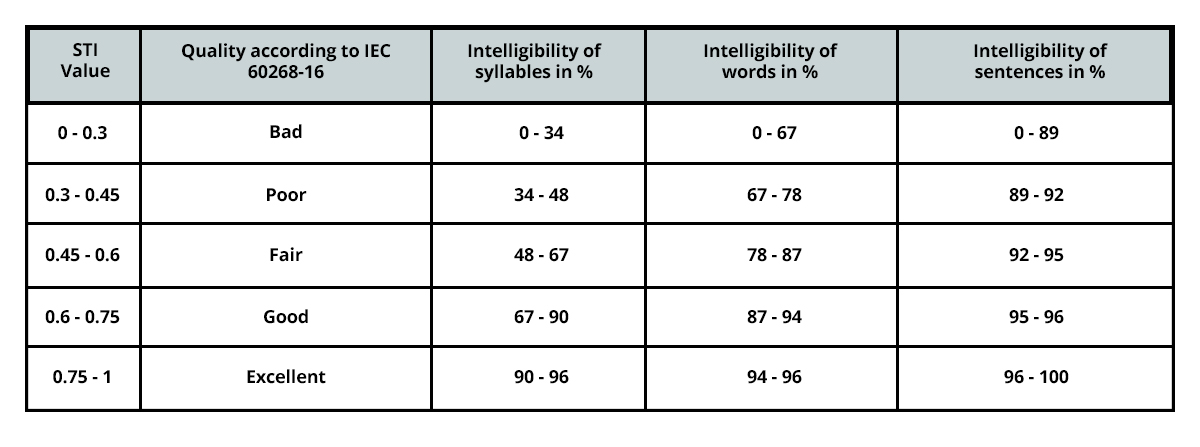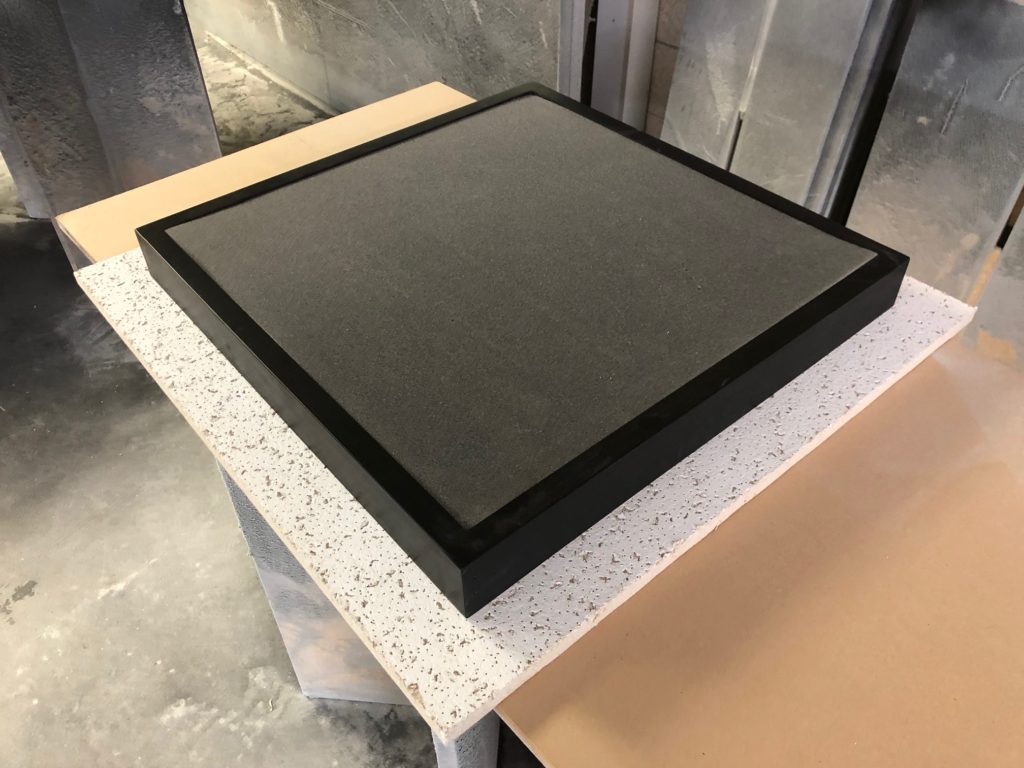The rooms that we must work in, play in and listen to music in all have many things in common. They have four walls, a floor, and a ceiling. We use all of these six surfaces when we are dealing with noise or sound energy within a room. The floor to ceiling dimension in our rooms is the smallest of all the three dimensions. Since it is the smallest of the three dimensions, we must be aware of the acoustic issues this dimension produces. This is where acoustic ceiling tile technology comes into play. The floor to ceiling distance produces two main acoustical issues. The first is lower frequency issues. Lower frequencies will not fit into space between our floors and ceiling. Low-frequency energy is 30, 40, and 50′ long will not fit into our 8′ ceiling height. The second main issue is reverberation times. Reverberation is the summation of reflections from all room surfaces. Commonly referred to as “echo”. It is room noise that prevents you from hearing speech and music.
Reverberation
To fix for high reverberation times or the reflections from all of these surfaces you must cover the offending surface areas with the correct rate and level of absorption technology. The type of treatment you use depends on how much noise is within the room. The surface area you treat must be treated with a surface area coverage of 60 – 70% of the offending surface area wall, floor, or ceiling. The reason for this amount of coverage is that with reverberation times, one must reach a point of critical mass or surface area coverage. You must cover so much surface area before you here an audible difference. Critical mass is reached when you cover that 60 – 70% of the surface areas within the room
Surfaces
The ceiling is the closest surface area to us next to the floor. The floor has carpeting and usually people on it. People are carpeting. Each human being has an absorption coefficient of 12 square feet of material. This is the figure we use when we are calculating the reverberation times. We look at the materials the room walls are made of. The material type, thickness, and surface area material all contribute to higher reverberation times. As a general rule, the harder and dense the surface area the more reflections off of those room surfaces. The less energy that is absorbed due to the density of the material in the walls, the more reflections that will be thrown back into the room. This is why it is so critical to cover the offending surfaces areas with the correct rate and level of absorption. You can not use just any material type. You must match the rate and level of absorption with the frequency and amplitude of the issues you are having within your room size and volume. Don’t forget about the usage.
Usage
What you are doing in the room determines usage. Every room usage has different reverberation times. A band playing many instruments will produce a lot more energy. With more energy comes reflections that have higher strengths or amplitudes. If your room usage is a few people sitting around having coffee and talking then the reflections will have less energy. You must first define your usage to know what type and amount of treatment you will require within the room. Churches have a large surface area with long and tall walls. There are many congregation members and each one has a 2″ wide speaker in it. Picture a 150 – 2″ speakers sitting in the seats. They produce music well, we at least hope for that and voice. Music and voice are the two sonic objects that we must work within rooms. Reverberation or the reflections from the room surfaces destroys both music and voice. This is the reason most churches sound horrible.
Music and Voice
Music and voice are different and the same. Music has a wider frequency response range. The frequency response of voice falls within the music frequency range. When it comes to high reverberation times and voice, they just don’t mix. High reverberation times means that you must stand directly in front of the person you are trying to communicate with and use direct energy from your mouth (speaker) to the receiver’s ears. This can be true for both small and larger rooms. You want the straight-line energy from your mouth to reach your friend’s ear before the reflections from the side walls or reverberation. You want no room sound. Reverberation is room sound. Music has a full-range sound. Full range sound demands much more distance for lower frequencies to travel before they start distorting. Music has both music and voice within it. Music fills the room along with the voice. The hardest part for churches to get correct is the balance between music and voice. The term is speech intelligibility. For music, let’s call it music intelligibility.
Speech Intelligibility
Speech intelligibility is an index where we assign definition and clarity to speech. It is a subjective scale that takes into consideration two main variables. They are background noise and reverberation. If our background noise exceeds our direct energy from our mouths or speakers we have too much room distortion. When we have that background room noise and then we add the reflections from the wall surfaces we now have two forms of room distortion. The speech intelligibility index takes those two variables into consideration. The technical name for this measurement is the Speech Transmission Index. If you look at the STI scale below, it is the one on top of the scale labeled STI. As you move from left to right you cross percentages. These numbers represent the percentage of individual words that will be heard clearly. In the next graphic, you can see the STI value which is the subjective scale of sound quality.
Definition speech intelligibility: https://en.wikipedia.org/wiki/Intelligibility_(communication)
Definition Speech Transmission Index STI: https://en.wikipedia.org/wiki/Speech_transmission_index
Stop And Think
Let’s summarize what we have learned. We now know that speech and music require lower reverberation times than most rooms have. We can use churches as an example of the issue where the reflections from all the ceiling and walls produce distortion. This distortion or high reverberation times have a direct impact on the number of words and sentences we hear clearly. The goal in any room is a balance of direct energy which is the straight-line energy from the source (speaker or mouth) and the reflections from the wall surfaces. We accomplish this balance through treatment. Lets now focus on treating the offending surface areas. The surfaces we have to work with are the ceiling and the four walls.
Acoustic Ceiling Tile
A common treatment type for ceilings is acoustic ceiling tile. Our first warning in any material or treatment type is the word acoustic. A lot of manufacturers use the word acoustic to do many things. One thing they use it to do is to increase the cost to the layman. People believe that if it has the word acoustic in the title it must be for sound. If I buy this product that has the word acoustic in it, It will solve my sound problem. Nothing could be farther from the truth. The phrase acoustic ceiling tile to most means that these are ceiling tiles to be installed on the ceiling and will help you with some sound issues. There are many types of acoustic ceiling tiles. You must find the one that works for your noise ( reverberation) levels. Most acoustic ceiling tiles are inserted into drop ceilings. Everyone has seen these. They are 1/2″ thick and have an edge that is recessed for the tile to sit in a metal grid system. Any material a 1/2″ thick will have little impact on lower reverberation times.
Studio Pro Foam
We have taken that acoustic ceiling tile and added our 2″ studio pro foam to it. Our studio pro foam was designed to absorb music and voice. It was designed to absorb music and voice at a rate and level that will lower reverberation times and contribute directly to the STI (Speech Transmission Index). With this lightweight foam technology secured to 1/2″ acoustic ceiling tile, we now have a professional absorption technology with our foam. Our foam technology is used in professional recording studios all over the world. With this as your new acoustic ceiling tile, you are well on your way to managing your room’s reverberation times by starting with the best surface area to treat which is the ceiling.










